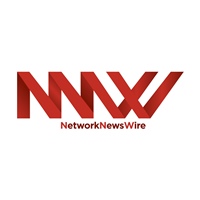Web3 Aims to Transform the Healthcare Industry
Post# of 173

The healthcare industry is at a crossroads. For years, experts have pushed for better data-sharing systems to improve patient care, research, and innovation. In response, a U.S. government agency implemented a national initiative for health information interoperability commonly called TEFCA as part of an initiative to enhance healthcare data accessibility and interoperability. However, political and regulatory uncertainties now put TEFCA’s future in doubt.
With traditional reforms facing roadblocks, a new contender has entered the conversation: Web3. Driven by blockchain technology, distributed storage and tokenized ecosystems, Web3 presents a revolutionary way to manage healthcare data. But can it truly transform the industry?
Web3 brings several game-changing features to healthcare data management:
Decentralization – Unlike consolidated medical data systems controlled by a few entities, Web3 distributes data across a secure network, reducing vulnerability to centralized failures.
Patient Sovereignty – Web3 allows individuals to manage, control, and profit from their health data, reducing reliance on hospitals and insurance companies.
Protection and openness – By using blockchain technology, Web3 ensures that health records are immutable, traceable, and protected from unauthorized access.
These features align with TEFCA’s original goal of creating an open, accessible, and interoperable healthcare system. However, some industry experts believe Web3 could go even further by improving research-sharing and patient engagement.
Despite its potential, Web3 faces several challenges that could slow its adoption in healthcare:
Regulatory Uncertainty– Healthcare laws, such as HIPAA, were created for traditional centralized data systems. Web3’s decentralized nature creates compliance challenges that regulators have yet to fully address.
Interoperability Issues– Traditional Electronic Health Record (EHR) systems follow strict data-sharing standards, while Web3 solutions are not well-connected, making it hard to combine blockchain health data with older systems because there is no common framework.
Reluctance to Adopt – Healthcare facilities, insurers, and healthcare providers are cautious about switching to blockchain due to concerns about scalability, speed, and reliability. Trust in these emerging technologies is still developing.
Ownership of Data vs. Financial Gains – While Web3 empowers patients with control over their health data, ethical concerns arise. Should individuals be allowed to sell their medical data? Could this lead to inequalities, where only the wealthy benefit from healthcare advancements?
While Web3 is not yet ready to take over the healthcare industry, it holds great promise. To succeed, it must address regulatory compliance, ensure smooth integration with existing systems, and build trust among healthcare providers and patients.
If these challenges are overcome, Web3 could usher in a new era of patient-centric healthcare where individuals have greater control over their medical information and researchers can access high-quality data for groundbreaking discoveries. With continued innovation and collaboration, Web3 may be the key to unlocking a more efficient, transparent, and equitable healthcare system.
It would be interesting to hear what firms like NextPlat Corp. (NASDAQ: NXPL) (NASDAQ: NXPLW) with interests in healthcare e-commerce have to say about the ways in which the existing challenges facing the use of Web3 technologies in the healthcare field can be addressed.
NOTE TO INVESTORS: The latest news and updates relating to NextPlat Corp. (NASDAQ: NXPL, NXPLW) are available in the company’s newsroom at https://ibn.fm/NXPL
Please see full terms of use and disclaimers on the Web3MediaWire website applicable to all content provided by W3MW, wherever published or re-published: https://www.Web3MediaWire.com/Disclaimer
 (0)
(0) (0)
(0)